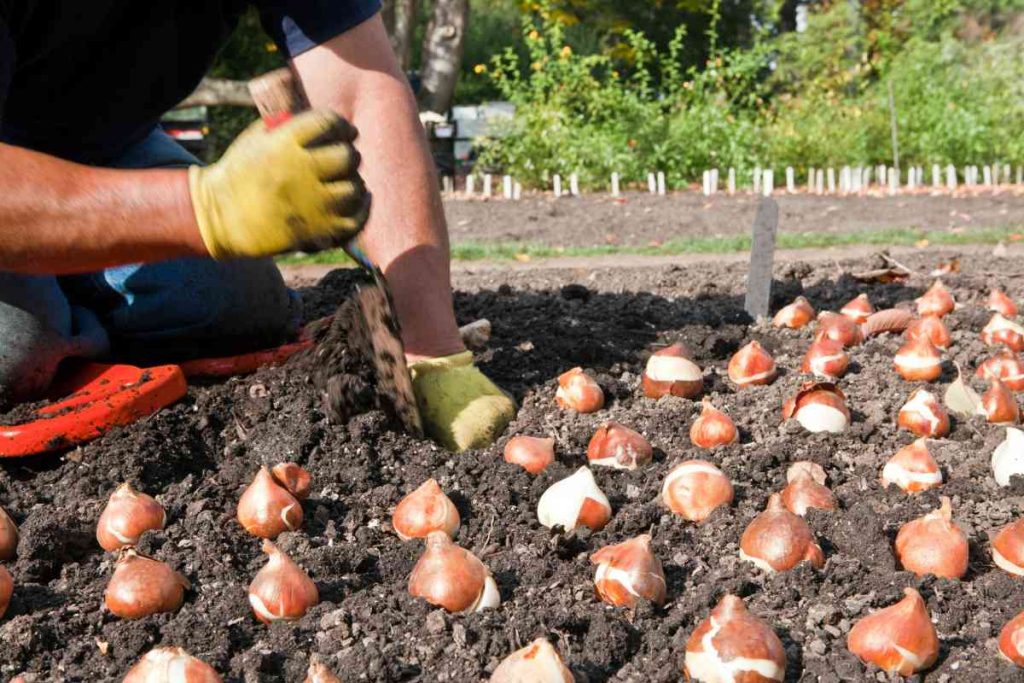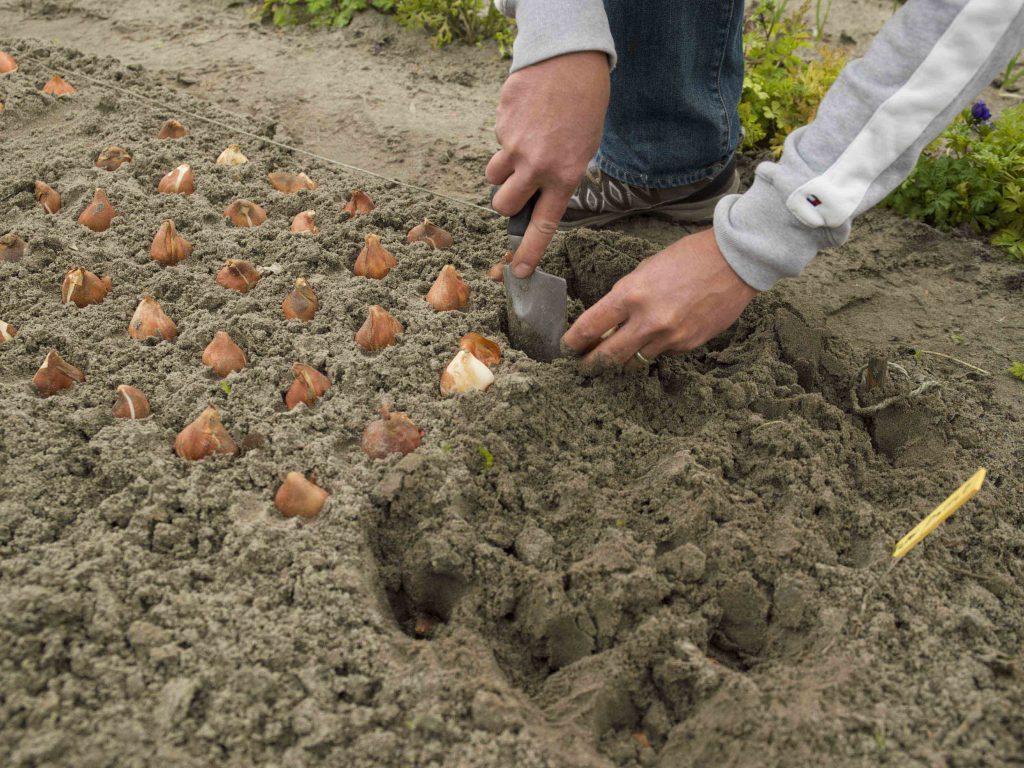
Everything You Need to Know About Fall Bulb Planting
Planting bulbs in the fall is the easiest way to guarantee a beautiful show come springtime. Planting Spring flowering bulbs doesn’t require any advanced horticultural knowledge. It’s simple with just a few steps you will have amazing success!
Table of Contents
When to plant



Bulbs can be planted as soon as you purchase them, even as early as September. The ideal time frame for planting is between late September and the end of November, when the soil temperature is 8C or lower. Keep in mind, planting the bulbs when the soil temperatures are too warm (say from an extended summer heat wave) can trigger early growth. Therefore, we tend to wait until the first gentle frost so we can plant them weeks before any lasting snow. The first frost in the garden also signals annuals and tender summer bulbs that the season is complete. Spring flowering bulbs that go into the ground during this period have plenty of time to develop good, strong roots. The sooner the roots develop, the sooner the bulb is anchored and will have access to water and nutrients. In spring well rooted bulbs will bloom longer.
If you’ve purchased your bulbs early in the season and you’re not quite ready to plant them, store them in a dry place at a temperature between 10-20 C degrees. Some options would be a shed or garage. Avoid storing your bulbs in the refrigerator, on a windowsill with lots of light or in an enclosed area with ripening fruit. Ripening fruit like apples, tomatoes, bananas and pears naturally releases ethylene gas, which is safe for people and pets, but is harmful to flower bulbs. Too much ethylene gas will cause the flowering stem to dry up in the bulbs and then in spring, you will have lots of foliage and sadly no blooms…
Where to plant



It all starts with the soil! Poor drainage is one of the most common reasons that bulbs will fail to flower. For this reason, it is important to find a spot with well-draining soil, and lots of bright sunlight. Sandy or loamy soil will be your best bet. While fall bulbs are extremely low maintenance once in the ground, they need to be planted in healthy soil to be given the best chance of blooming. Because of this, we do not recommend planting certain types of bulbs (tulips especially) in the same spot year after year. Tulips drain certain nutrients from the soil, and therefore amending or replacing the soil in your favourite areas for growing tulips is important, or we recommend finding a fresh area to plant your tulip bulbs.
How to plant
There is nothing better than a forgiving plant, especially when you’re new to the world of planting bulbs. When it comes to getting your fall bulbs in the ground, remember to place it in the soil with the pointy end facing up towards the sky and the root crown facing down. The root crown is the flat bottom end of the bulb. With some bulbs, this is a challenge to determine. The good news is that these challenging bulbs are usually flat, so we recommend planting them on their side.



Planting is simple. The general rule is to plant tulips at 2-3 times the depth of the bulb, usually about 15 cm deep. In a full to partially sunny location, use a small shovel to make a planting hole measuring around 40-50 cm in diameter – or smaller, depending on how many tulips you want to plant. Groups of 5-7 bulbs make for a great display. Loosen the soil a little at the bottom of the hole. Place the flower bulbs in the hole while keeping an average distance of about 2-3 times their width between each bulb (or around 10 to 15 cm). Large bulbs need more room than small ones. Loosen the soil in the hole where you are planting as well, about 20 -25 cm deep, this will allow the new roots space to grow.
There is lots of forgiveness when planting your bulbs too deep, shallow, or too close together. However, it’s important to remember that bulbs planted too deep may take a bit longer to emerge in spring. Bulbs planted too shallow may be exposed to winter temperatures which could possibly stunt spring growth.
How to water
Cover up your bulbs with soil. Then tamp down the soil carefully with your hands. After giving them a long, slow drink of water, you can dust off your clothes and call it a day. Any future watering will be provided courtesy of Mother Nature. Bulbs perform extremely well with little water. After their initial watering, you can forget about them. They will get enough moisture from the surrounding soil and rainwater.
A Few Additional Questions
Here are some of our most frequently asked questions from our Florissa community:
What will happen if I leave my bulbs in the ground? Will they bloom again next year?
Daffodils and other naturalizing bulbs (crocus, alliums, anemones, chionodoxa, iris, muscari) can be left in the ground and will bloom again the following spring with no problem. Sometimes, naturalized bulbs end up blooming around two weeks later in subsequent years, but they will still bloom beautifully. Tulips, will bloom wonderfully for 1-2 years in the garden however, will not provide repeat blooms season after season. Botanical tulips, greigii tulips, fosteriana tulips and kaufmaniana tulips and Darwin tulips are the exception to this. How bulbs are cared for in spring after they have bloomed will encourage the following years flowers. Also check out our blog about bulb after care to make sure you are ready once your flowers are done blooming in the spring!
Should I fertilize bulbs?
Bulbs contain all the nutrients they need to bloom their first year, but a fertilizing program will keep plants healthy and ward off diseases and pests. Compost and well-rotted manure are two good organic fertilizers that improve the soil and ensure a good soil structure for bulbs. Use organic supplements to add nutritional balance. Compound mineral fertilizers can also be applied but check the label to see if fertilizing is appropriate for your bulbs and the best time of year to do so.
Check out our bulb planting FAQ’s for more answers to questions we get about fall bulb planting!



Gordon Forgrave
Thank you for the Tulip planting instructions/information.
Jeanne
Thanks for the info